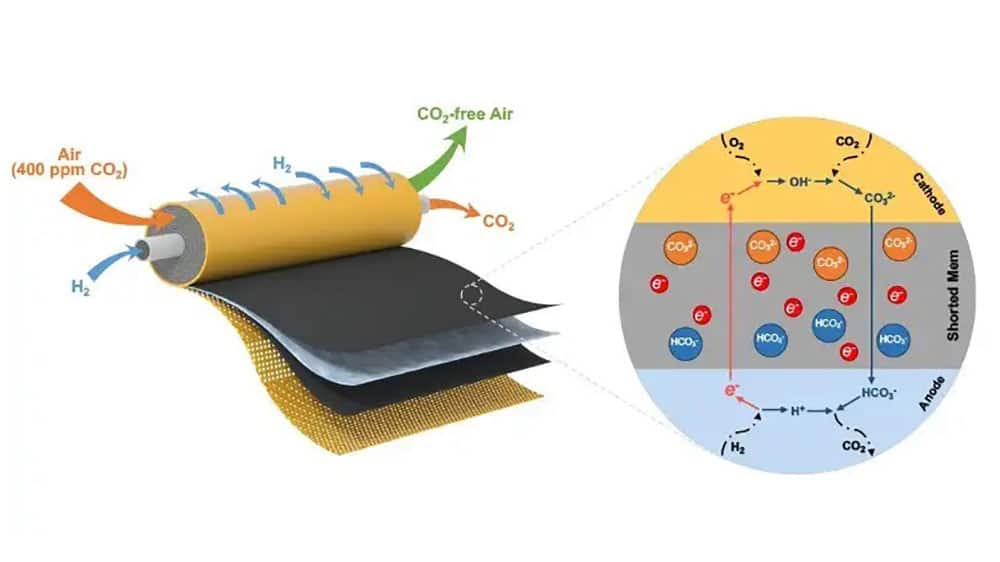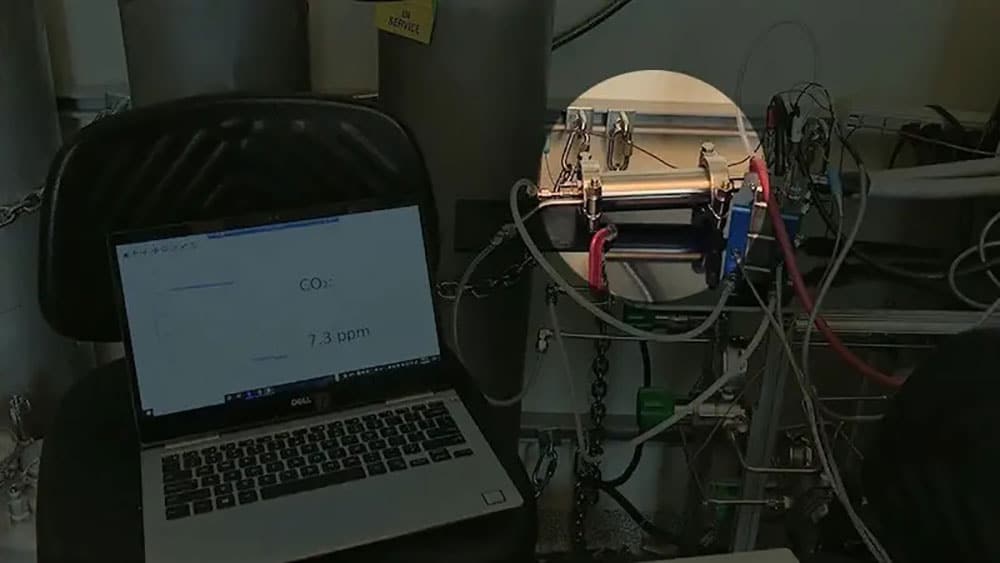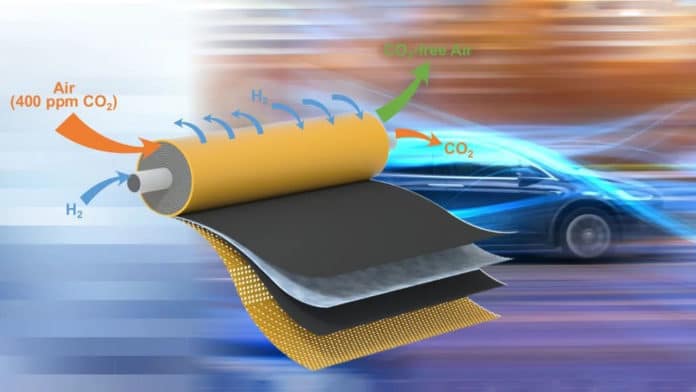University of Delaware engineers have developed a new ‘hyper-efficient method’ to effectively capture 99% of carbon dioxide from air using a novel electrochemical system powered by hydrogen. It is a significant advance for carbon dioxide capture and could bring more environmentally friendly fuel cells closer to the market.
The team behind the new technology has been working for some time to improve hydroxide exchange membrane (HEM) fuel cells, an economical and environmentally friendly alternative to traditional acid-based fuel cells used today. The major problem with the technology is the sensitivity of the HEM fuel cells to carbon dioxide in the air, which makes it hard for the fuel cell to breathe. This can reduce their performance and efficiency by up to 20%, negating their benefits over a typical petrol engine.

A few years back, the researchers realized this disadvantage might actually be a solution – for carbon dioxide removal. “Once we dug into the mechanism, we realized the fuel cells were capturing just about every bit of carbon dioxide that came into them, and they were really good at separating it to the other side,” said Brian Setzler, the study co-author.
While this isn’t good for the fuel cell, the University of Delaware team, led by Professor Yushan Yan, knew if they could leverage this built-in “self-purging” process in a separate device upstream from the fuel cell stack, they could turn it into a carbon dioxide separator.

The results showed that an electrochemical cell measuring 2 inches by 2 inches could continuously remove about 99% of the carbon dioxide found in the air flowing at a rate of approximately two liters per minute. Their soda can-sized early prototype device is capable of filtering roughly 10 liters of air per minute and scrubbing out 98% of the carbon dioxide, the researchers said.
The electrochemical device can be used in transportation for things like a hybrid or zero-emission vehicles. In addition to automotive applications, the device could also be used to remove carbon dioxide elsewhere. For example, the UD-patented technology could enable lighter, more efficient carbon dioxide removal devices in spacecraft or submarines, where ongoing filtration is critical. It could also be used in airplanes and buildings where air recirculation is desired as an energy-saving measure.
